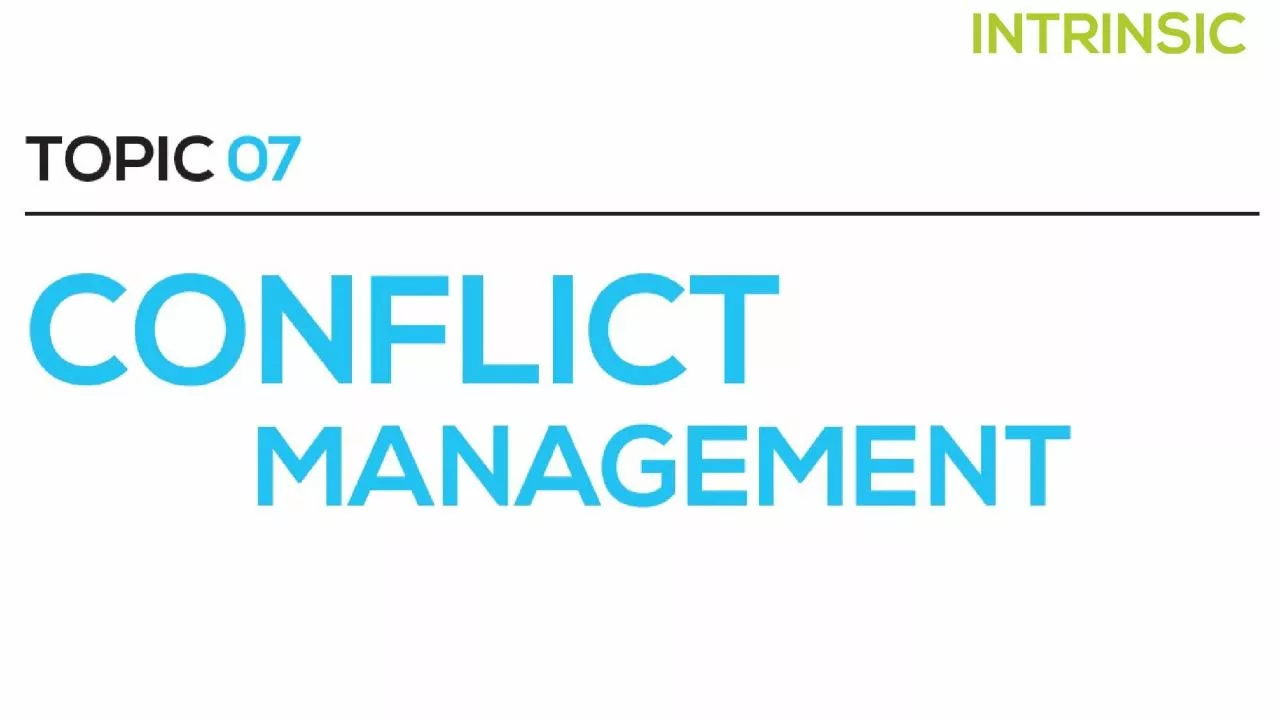

To experience a conflictual situation in a safe environment and reflect on the feelings that arise causes of conflict and the importance of communication To explore the types of conflict that arise when the behaviours andor goals of different stakeholders are incompatible ID: 1009450
Download Presentation The PPT/PDF document "Conflict Management: Objectives" is the property of its rightful owner. Permission is granted to download and print the materials on this web site for personal, non-commercial use only, and to display it on your personal computer provided you do not modify the materials and that you retain all copyright notices contained in the materials. By downloading content from our website, you accept the terms of this agreement.
1.
2. Conflict Management: ObjectivesTo experience a conflictual situation in a safe environment and reflect on the feelings that arise, causes of conflict and the importance of communicationTo explore the types of conflict that arise when the behaviours and/or goals of different stakeholders are incompatibleTo share experiences of the common categories of conflict in conservationTo increase knowledge of conflict analysis tools
3. Activity: Conflict ManagementDivide into 3 similar sized groupsRead the instructions for your group but don’t share!Reflection:How did you feel during this activity? Was there an obvious leader or mediator? What did this person do?Was the atmosphere competitive or cooperative?Did you compromise? At what point did you start to compromise? How might you have compromised?What does this exercise tell us about the potential for conflict over (limited) resources?
4. What is Conflict?“Conflict is a relationship between two or more parties (individuals or groups) who have, or think they have, incompatible goals and act on the basis of these perceived incompatibilities”Conflict is a fact of life, but becomes problematic when it is violentIt is often an expression of change It needs to be acknowledged, understood and transformed where possible into a force for positive change
5. Figure: Types of conflictCompatible goalsIncompatible goalsIncompatible behaviourCompatible behaviourNo conflictLatent conflictSurface conflictOpen conflict
6. Activity: Types of ConflictIn small groups, discuss examples from your own experience or knowledge of the different types of conflict (latent, surface, open). Take 1 or 2 examples and analyse:Who was involved (stakeholders)?What were the sources of conflict?Were there any particular triggers that shifted latent conflict into open conflict….. …or transformed surface or open conflict into no or latent conflict?Be prepared to present back to plenary after 15 mins
7. Conflict analysisWhat tools did you use (or could you have used) to analyse the context of the examples you discussed?i.e. how did you identify the stakeholders, sources, triggers, appropriate strategies etc? Use of participatory methods help ensure the full range of perspectives of different stakeholders can be discussed and analysed.
8. Positions, Interests, Needs (PINs)Positions - tangible things stakeholders say they want; public statements about the situation. Interests - things stakeholders want; underlying motivations that lead stakeholders to take a particular position. Needs – goals pursued by stakeholders in order to survive. May be subjective i.e. perceived needs.PositionsNeedsInterestsAreas of mutual interests/needsStakeholder 2Stakeholder 1
9. Activity: PINsIn pairs, you will be given 2 character cards from the fruit sharing exercise.Discuss the different positions, interests and needs of your 2 charactersTry to identify areas of mutual interestIllustrate using the PINs diagram
10. Reflection: PINsHow useful did you find it to distinguish between positions and interests?To what extent do you think it would be useful to use this tool in a ‘real’ situation with stakeholders in a (potential) conflict situation?